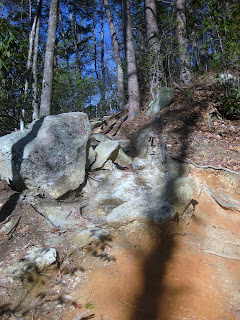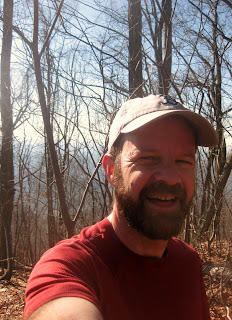I have long contended that the reason I am generally so happy is that I’m good at telling stories.
The stories we tell are not life, but only the means we have of arranging the chaos of life into manageable, comprehensible clips. If we tried to narrate our lives as they happened, the stories would be full of digressions, non sequiturs, accidents, and tedium.
So we tell stories. We choose and arrange the random pieces of our lives in ways that create more cogent narratives, where actions lead to actions, where motivations are more or less clear, where characters can be introduced and developed in ways that the folks who populate our lives cannot be. We can cut out what doesn’t matter, or what is embarrassing or not, we expand, highlight, contract, all in an effort to make sense out of what is otherwise and arguably non-sense. We can create suspense, humor, gloom, or joy, all by how we arrange the words, the sentences, the paragraphs.
As with all art, story-telling seeks to create (or recreate) particular feelings of a particular event or set of events. We want readers and listeners to feel what we felt, to understand the physical and psychic boundaries crossed or approached, to laugh at the humor and cry at the sadness, to follow the process of falling in love, or to experience the beauty we experienced. We use to tricks to get our message across—metaphors, similes, analogies; we note and highlight irony, juxtaposition, and all sorts of other devices that scholars identify.
But the actions we describe do not happen the way we describe them. Life is not metaphor—we make metaphors out of the telling of it. The fog rising from the lake in the early morning does not come on little cat feet, but that vision helps convey one I felt that morning, setting off on a 24-mile run, crossing the spillway as we started our way around the lake.
 |
| The end of a bad stretch of the 2010 Smoky Mountain Relay. I'm looking for a joke in there somewhere. |
I seek in running the moment, the feeling of the air on my skin, the strength in my legs at the meeting of shoe and dirt, thoughts of nothing but where I am, how I feel, at one with the surroundings and the day. Not that that always happens—often I think of work, or family, or the way I’ll tell the story of the run I’m on.
When I ran in road races, every other week or so, lowering my times and finishing in the top 5 of most of the local races I ran, I found the effortless gliding of a PR run one of the prime moments I sought. And I over-ran that limit some, and feeling crappy I‘d often start into the story of the race—where I lost it, where the proverbial wheels came off. Then I knew I was shattered, out of the moment, doomed to just hold on for whatever distance I had left.
Though my running has changed, I still seek that gliding feeling, not necessarily for speed, but for distance and terrain. Sometimes now the telling of the story gives me energy and laughs. During that 24-mile run, I started rolling back and forth between feeling good and feeling bad. Nineteen miles in, I got a little out of the moment, and thinking about the next 5 or so miles, I got ahead of me. But I kept it in, and suddenly I thought that every other step was a good one. I told Seth, “That was a good step.” He was in the same state, replying, “That was a good 120 seconds.” Saying it brought me back to it, and the chuckles helped.
I set new goals these days for races. The varied terrain of trail races doesn’t really allow for PRs the way road races do; in my upcoming third 50k, I’ll climb more than the two previous races combined. But I have the same goals: love the day, love the woods, and say something funny at every aid station. The last one keeps me occupied; I think of a lot of funny things, and then I have to pick the right one. Of course, I can use two at one station.
I’ll let you know how it goes.














